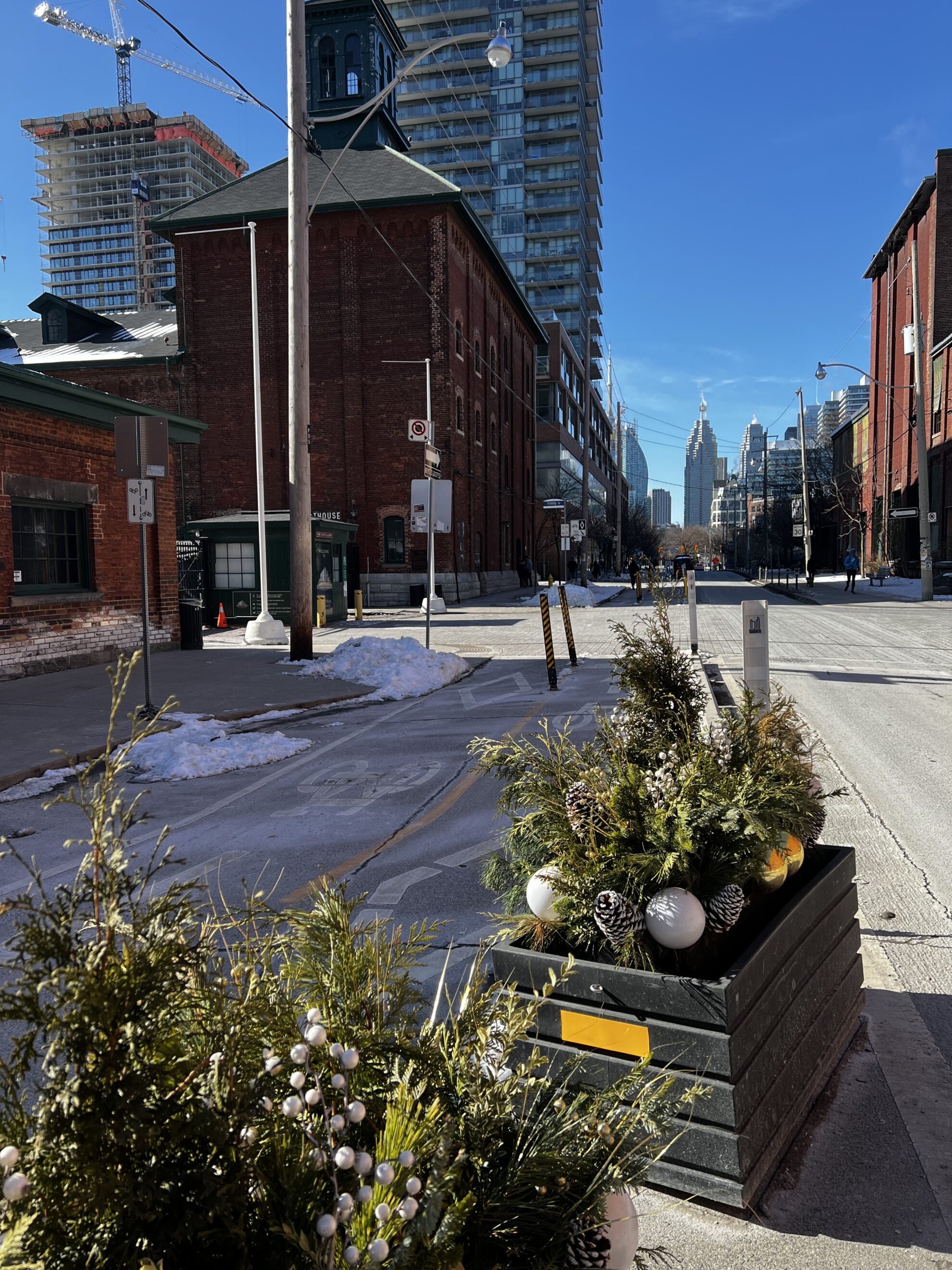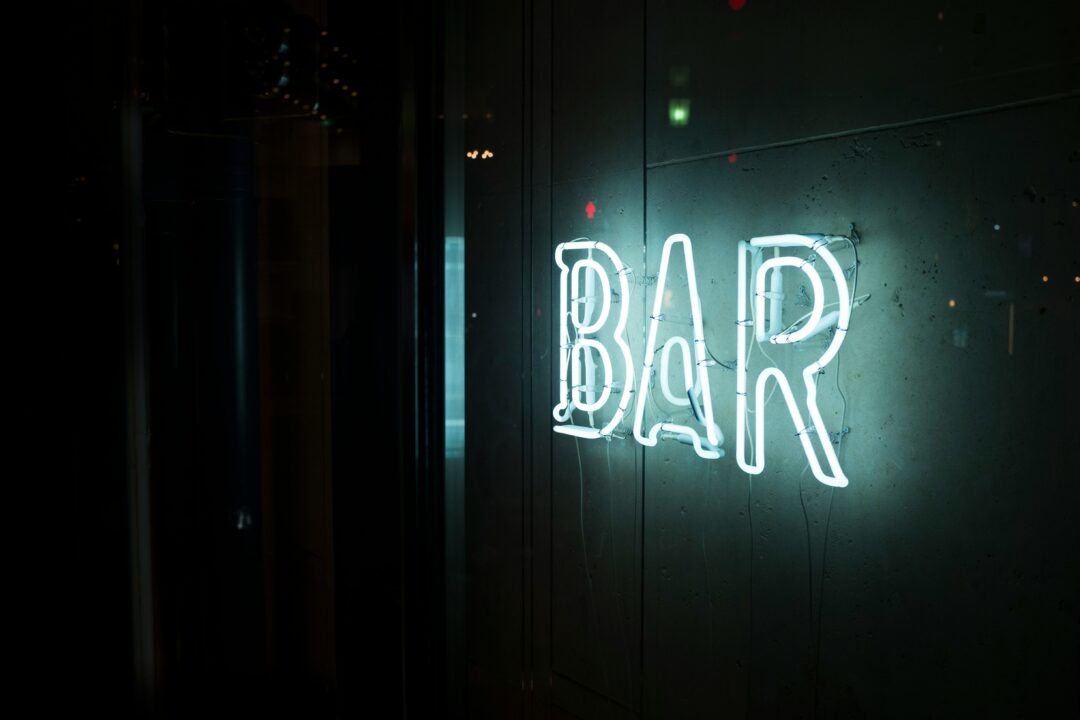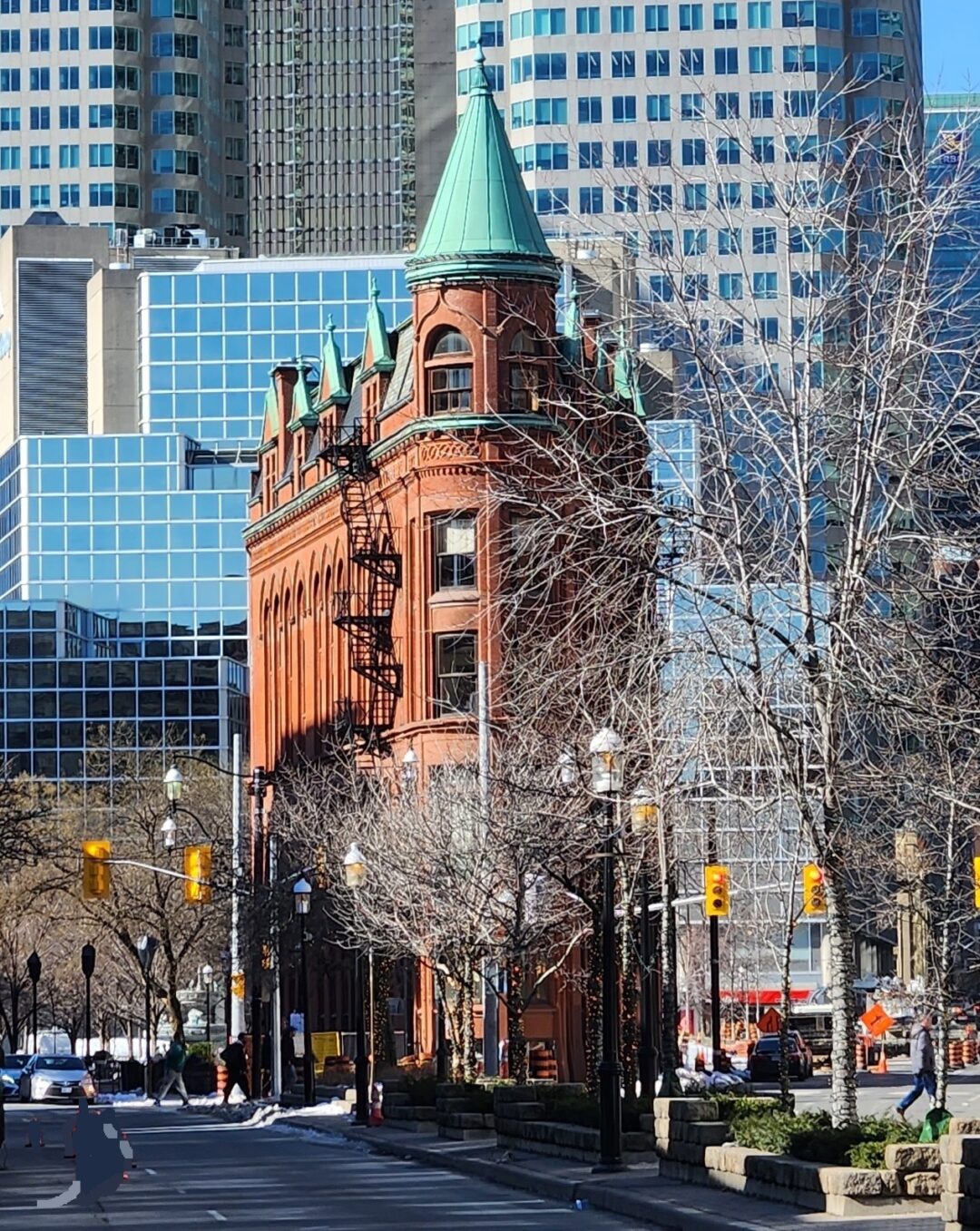Caleb Lawrence –
The lights have dimmed, the towering Christmas tree has been carted away, and the iconic Dior sign has been packed into storage. As of January 5, another season of the Distillery Winter Village officially came to a close .
For those who call the Distillery District home, the end of the Winter Village marks a long-awaited return to normalcy, as sidewalks, streets and community spaces gradually become accessible again. The last remaining sign of the vast crowds that recently occupied the Village is the persistent litter lingering on surrounding streets.
Over the years, as the Winter Village has grown in popularity, the Gooderham & Worts Neighbourhood Association (GWNA) has worked closely with the Distillery District to build and adapt traffic management plans to minimize disruptions for local residents. Even the best-laid plans often falter when put to the test. Enforcement has remained inconsistent, and the sheer scale of the event continues to push the limits of what the neighbourhood can reasonably accommodate.
As with many wicked policy problems in Toronto, there is no perfect solution, only competing interests. The Distillery District, as a for-profit entity, will inevitably make commercial decisions, including extending the Village’s duration. The City of Toronto, while eager to market the Distillery as a premier tourist attraction, must also consider the mounting frustrations of local taxpayers – residents who have a fundamental right to reasonable enjoyment of their homes and community.
How did this year’s Winter Village measure up for local residents? According to responses to a social media post on January 21 by the Gooderham & Worts Neighbourhood Association, a majority felt that the Winter Village was worse this year than in the past.
Chief complaints include the extended length of the event (approximately 55 days), blocked sidewalks, intrusive camera flashes beaming through home windows, litter piling up, visitor parking shortages, pedestrians forced onto active streets, and widespread disregard for parking rules.
However, a few residents noted improvements, particularly in access for rideshares and deliveries, as well as the reopening of Cherry Street after long-term construction, which helped to ease traffic congestion in the area.
Asked for comment on this year’s Winter Village, the neighbourhood association’s president stated that it had no official comment at this time but would share more information with the community soon.
As decision-makers evolve the traffic management plan for next year, it is clear that stronger pedestrian management and adjustments to reduce or disincentivize non-local motor vehicle access during peak periods is essential. In addition, public transit should be promoted given the immediate accessibility of the Distillery Transit Loop at Cherry Street.
On the evergreen theme of a lack of enforcement, why not use Toronto’s new traffic management (Vision Zero) team, which has been assisting rush hour-traffic in the city? This would free up police resources for more essential activities.
While the Winter Village may have packed up the holiday magic and (locally) infamous Dior sign, debate over its impact on the neighbourhood is far from over. Will next year bring clearer sidewalks, quieter nights and safer roads? If not, local residents will once again find themselves navigating a winter wonderland of frustration.




